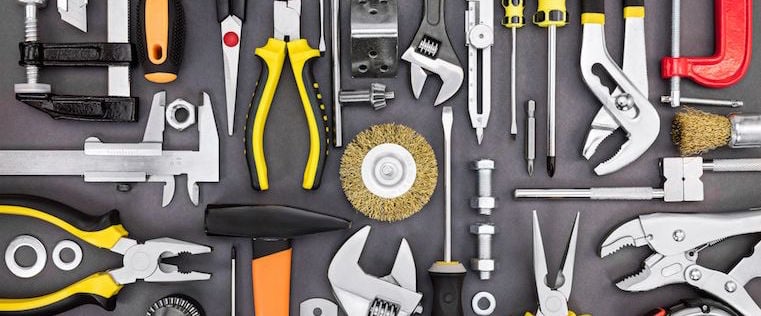Table of Contents
- What Is a Sales Enablement Framework?
- Benefits of a Sales Enablement Framework
- Building a Sales Enablement Framework
We’ll walk through how to create and execute it, but first let’s look at some of the benefits of a sales enablement framework to ensure buy-in from everyone involved in the process.
Benefits of a Sales Enablement Framework
Building a sales enablement framework means bringing together different departments and stakeholders to create an overarching strategy to support sales. It takes time and energy, but it can help unlock quite a few significant benefits.
Align Siloed Departments
HubSpot’s 2024 Sales Trends Report points out that just 30% of sales professionals believe sales and marketing are strongly aligned in their organization. That’s a huge problem considering reps with aligned departments are 103% more likely to be performing better at their goals.
Marketing can be a powerful catalyst for sales, generating quality inbound leads and nurturing them through the sales funnel — but only if they’re receiving information and feedback from the front lines about who to target with marketing campaigns, what objections these prospects commonly present, and what resources are needed to overcome them and move deals forward.
A sales enablement framework establishes a collaborative process and gets disparate departments on the same page.
Help Reps Exceed Quotas
Anecdotally, I find it much easier to effectively engage with prospects armed with a library of content I commissioned based on my experience. Fortunately, the real research echoes this sentiment.
According to HubSpot's 2024 State of Sales Report, sales professionals who leverage sales enablement content are 58% more likely to beat their sales targets. G2 research reports a similar finding on a zoomed-out scale, suggesting that companies with a sales enablement strategy will enjoy a 49% higher win rate on their forecasted deals.
Maintain a Competitive Sales Stance
If you’re still on the fence about building an enablement framework, you might be a little behind the curve.
G2 research indicates that the last five years have seen a 343% increase in sales enablement adoption across organizations, and Highspot finds that most organizations (81%) are at or beyond the point of building an established and structured enablement model.
It’s time to embrace enablement, or Gartner says your competitors will first. A press release from the firm predicts that sales enablement budgets will increase by 50% from 2023 to 2027.
The best time to start building a sales enablement framework was yesterday, but the second-best time is now — so let’s get started.
Building a Sales Enablement Framework
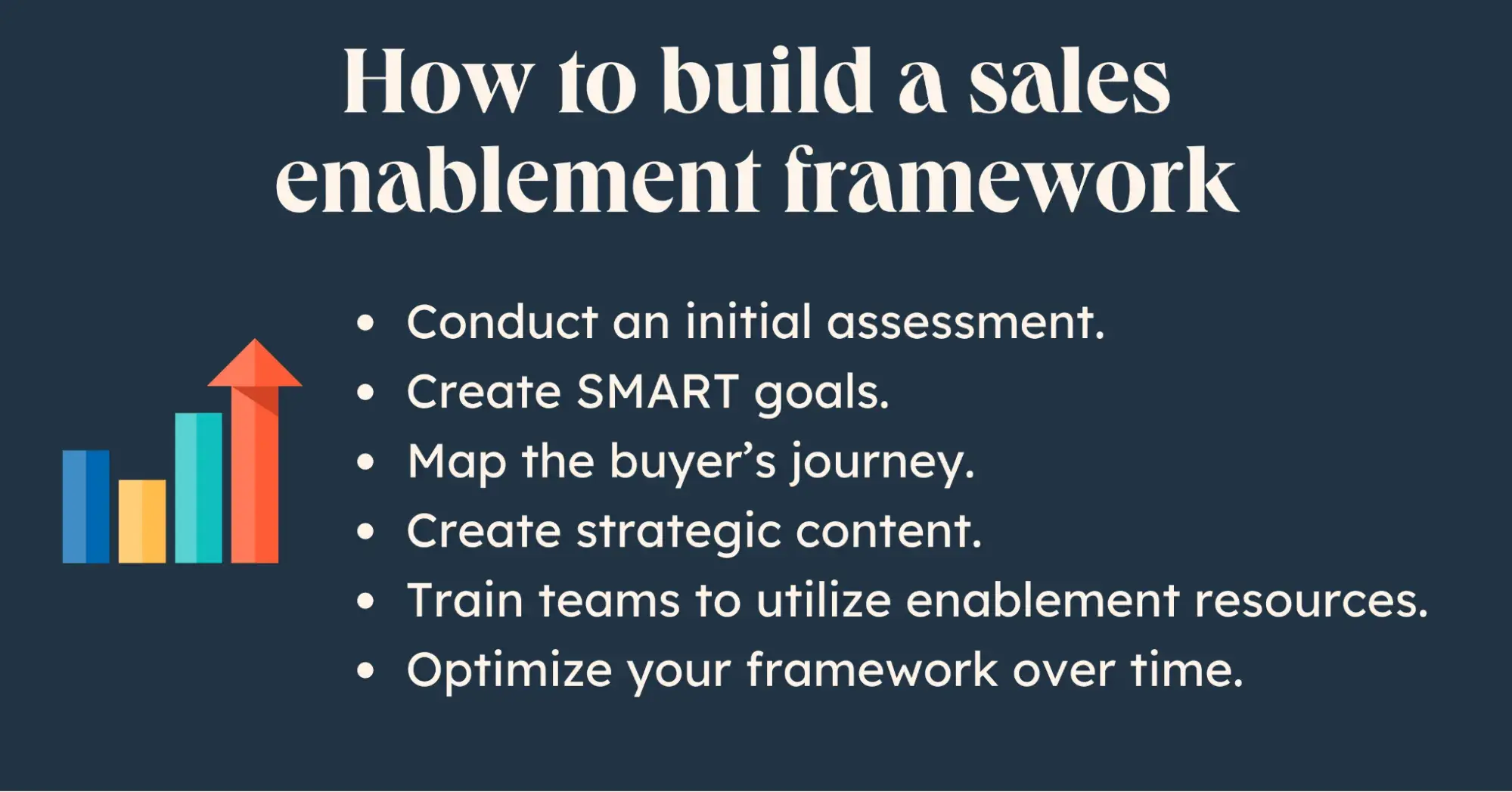
1. Conduct an initial assessment.
To get where you need to be, you’ll need to start by identifying where you are. Even when I’ve had to create an enablement framework seemingly from scratch, I’ve found unofficial processes, resources, and programs scattered throughout sales and other departments. Look at your current process to spot gaps, and sit down with reps at either end of the quota achievement spectrum to discover what’s working well and what needs improvement.
Pro tip: If you’re at a small startup without much formal structure, you might benefit from filling out this free sales plan template from HubSpot — and if you’re building the sales function from scratch, talk to your customers to get insights from their experiences. What aspects of the sales process went well, and where did they feel there was room for improvement? Make a list of the findings you uncover along the way and use them to inform the next steps of the process.
2. Create SMART goals.
What do you want your sales enablement framework to achieve? Be as specific as possible. Create goals that are SMART: specific, measurable, achievable, realistic, and time-bound.
In my first go at it, my company’s SaaS product had a nearly 120-day sales cycle, and our pipeline was clogged up with countless opportunities languishing in a kind of “prospect purgatory.”
My first goal was to cut this cycle in half, which we were able to do by implementing a better lead qualification system, filling in gaps in our content library, and using automation solutions. These initiatives helped to remove low-quality prospects early, address key objections effectively, and conduct outreach more efficiently — all in service of the original, highly specific goal.
3. Map the buyer’s journey.
There’s a good chance your customers follow a somewhat similar path on their journey from recognizing they have a problem to deciding that your product is the best way to solve it. For your sales enablement framework to be as useful as possible, it should reflect the awareness, consideration, and decision stages customers must go through.
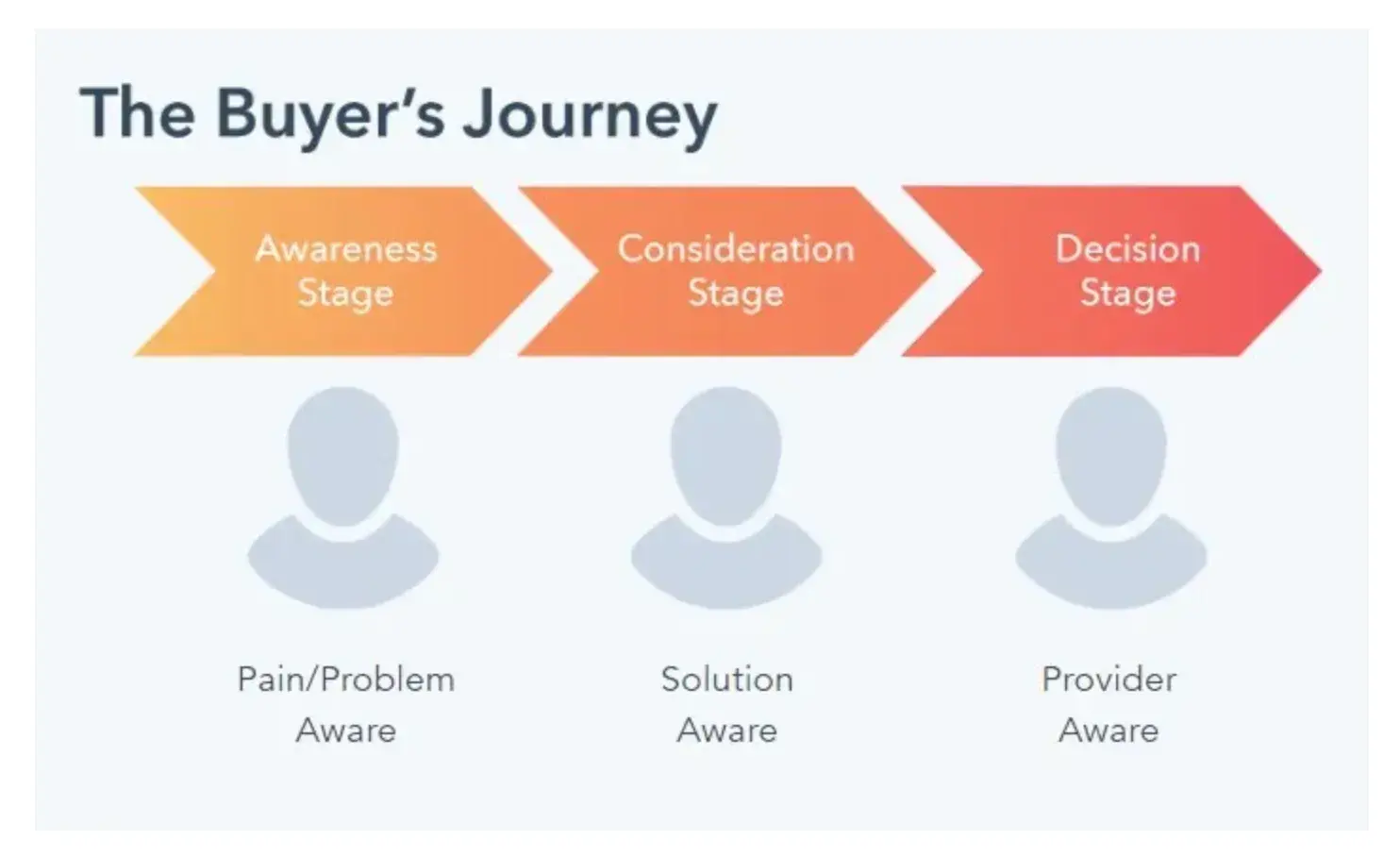
When I joined a SaaS startup and set out to define our buyer’s journey, it became immediately obvious how many prospects we were losing between the awareness and consideration stages. By the time serious potential buyers were comparing our solution against other options, we were likely to win the sale — but the dropoff beforehand was untenable.
Mitigating the initial drain involved two strategies: educating and nurturing buyers who could someday be qualified but weren’t there yet, and conducting more thorough discovery to eliminate prospects who didn’t meet the criteria outlined in our Ideal Customer Profile (ICP) and probably never would.
Pro tip: Once you’ve clearly mapped the buyer journey, identify relevant metrics and key performance indicators (KPIs) to track at each stage.
4. Create strategic content.
A robust sales enablement framework includes tailored content designed to grease the wheels and move prospects from one buying stage to the next. For example, when your prospect is in the consideration stage, they’re researching all of the options available in the marketplace in order to weigh their pros and cons and arrive at a decision.
Pro tip: One of my favorite types of content is a direct comparison that shows a prospective customer why they should choose you over the competition. Some sales teams are taught to avoid mentioning other solutions, as if by not naming them you could somehow make the alternatives on the market disappear. HubSpot's 2024 Sales Trends Report shows just how misguided that approach is, finding that 96% of buyers research a solution before contacting sales. If they’ve looked into you, they’ve looked into your competitors: Embrace it and be ready to show them why you’re the better choice.
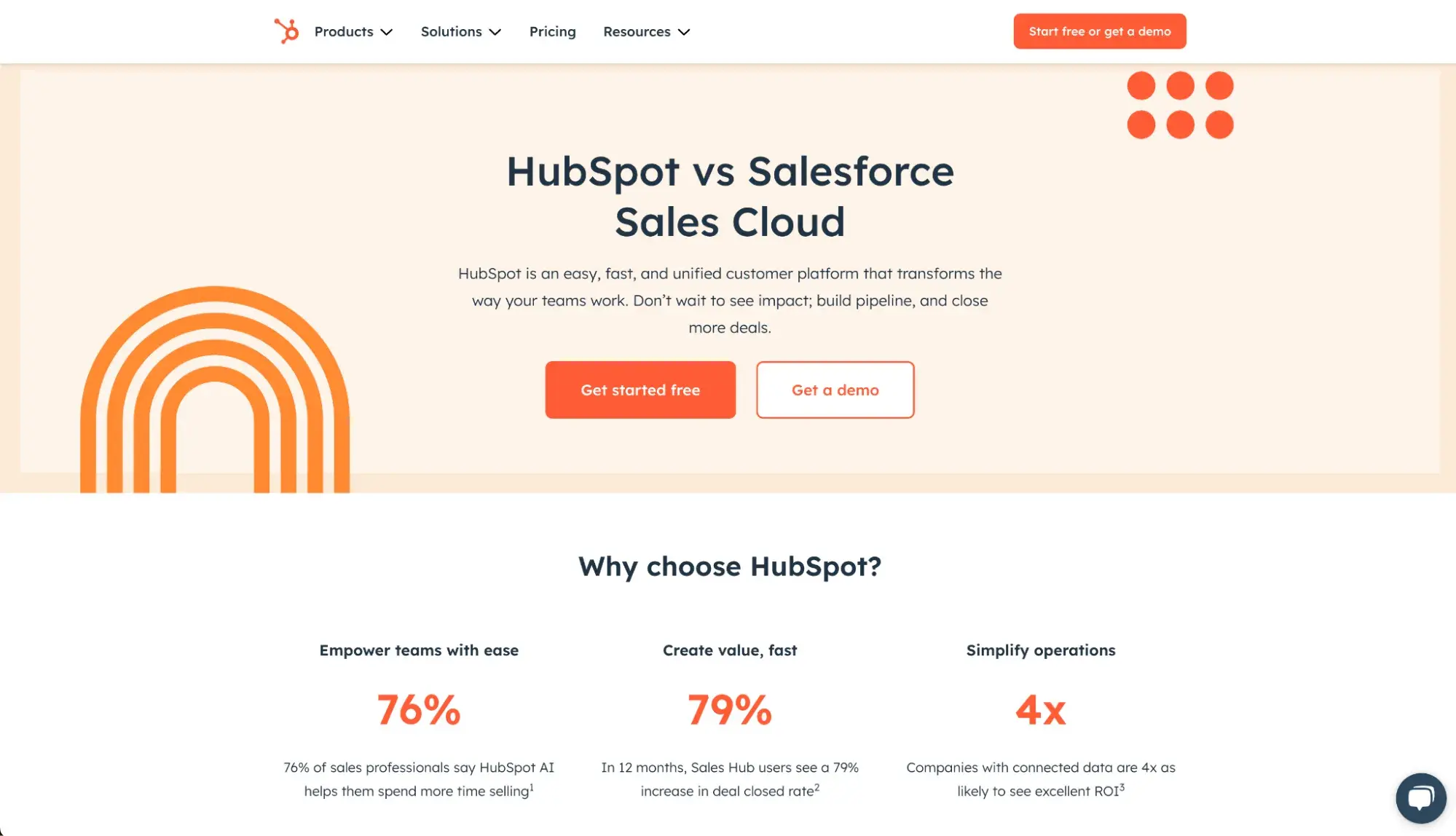
5. Train teams to utilize enablement resources.
Build it and they will… forget it exists. Building a sales enablement framework is a waste of time and money if you don’t teach the teams involved how to leverage the new resources they have access to.
Tools and technologies have a place in many implementations, but they aren’t the end of the story. If possible, make room in your budget for coaches and consultants who can help unlock the full value of your initial investment in the framework.
Pro tip: Identify the sales reps who have historically been the best at leveraging existing content, and have them train the laggards to get them up to speed on new enablement resources. You can do the same with new additions to your tech stack, leaning on the power users who begin to stand out after onboarding is complete. Or, take an even easier route. AI-powered, just-in-time enablement platforms like Spekit will automatically surface the answers, content, and training sales reps need to drive pipeline, exactly when and where they need it.
6. Optimize your framework over time.
Building a sales enablement framework doesn’t mean your work is done. Your framework should be a living document that is continuously amended and iterated upon. As your teams learn to take full advantage of the new framework, revisit the goals you outlined in step two and adjust them up or down — or alter them entirely based on what you’ve learned from the initial implementation.
Pro tip: I recommend creating an #enablement Slack channel so feedback can be collected on an ongoing basis while it’s fresh. Then, the owner of the sales enablement initiative can schedule quarterly feedback sessions to digest the feedback and use it to chart an optimized course for the following quarter. Rinse and repeat.
The Enablement Evolution
Sales enablement adoption is on the rise, and that shouldn’t come as a shock. More sellers are encountering shrinking budgets and increased scrutiny over new expenses, meaning sales teams will need all the support they can get. If you don’t already have one, building a sales enablement framework can help reps and your company hit growth targets in a more difficult selling climate.
Sales Enablement



![Why your sales enablement content needs real-world credibility [new data]](https://53.fs1.hubspotusercontent-na1.net/hubfs/53/sales-enablement-content-credibility-1-20251028-1482008.webp)

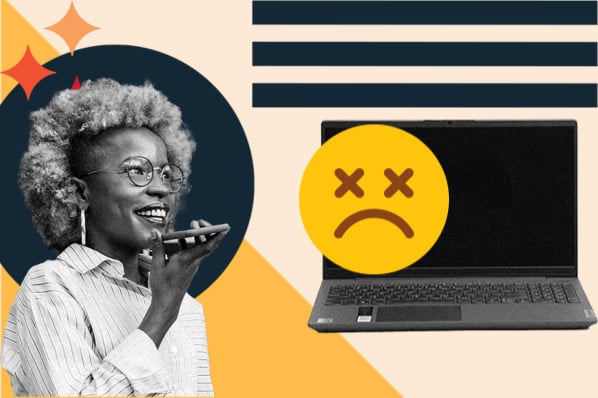

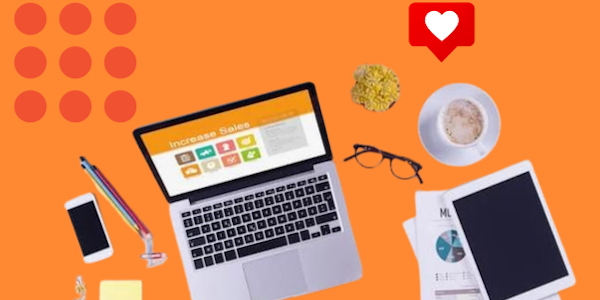



.jpg)
